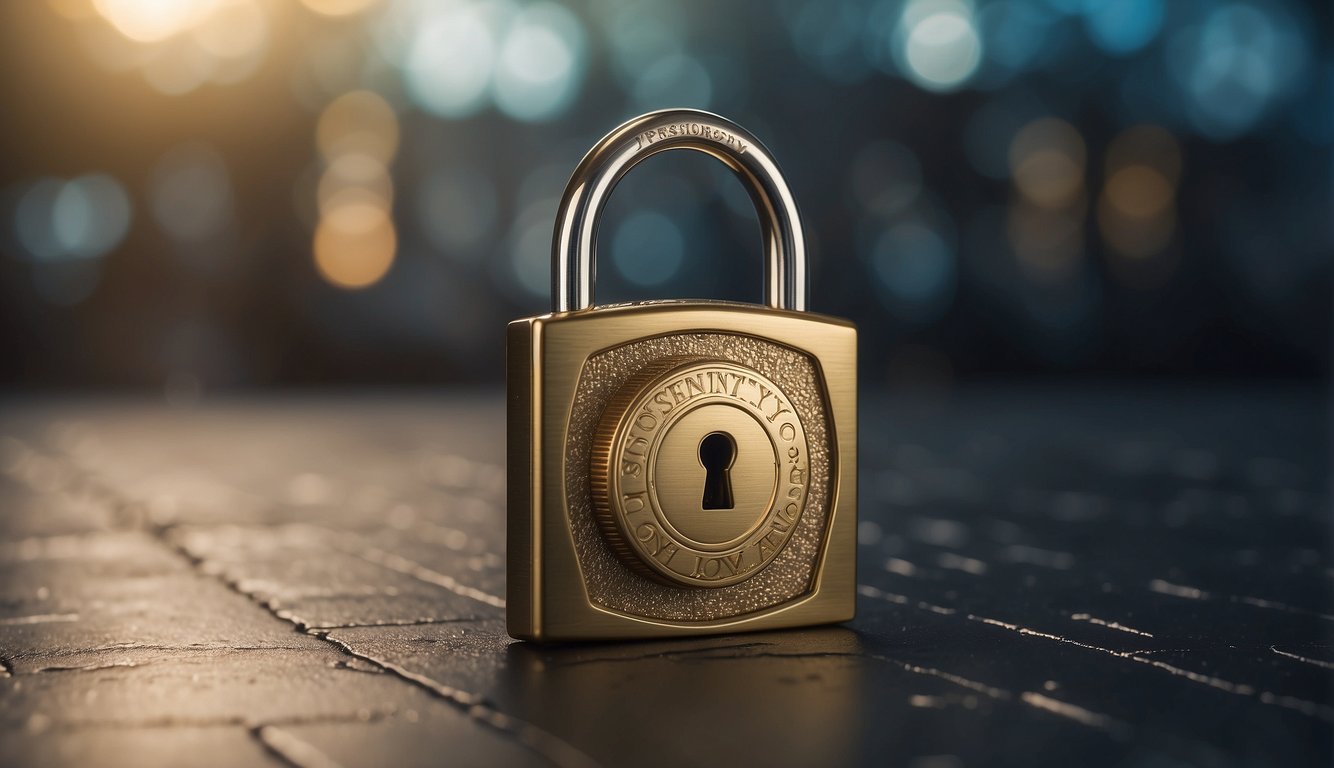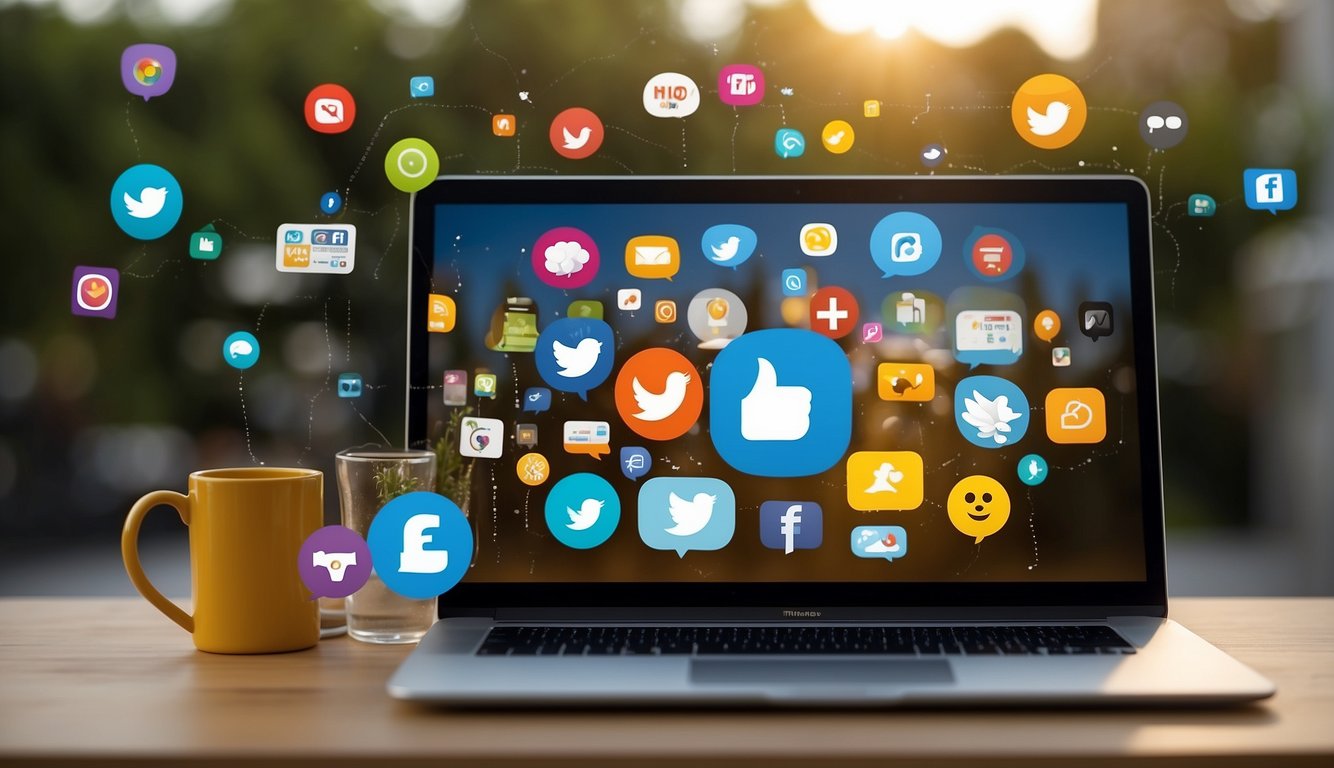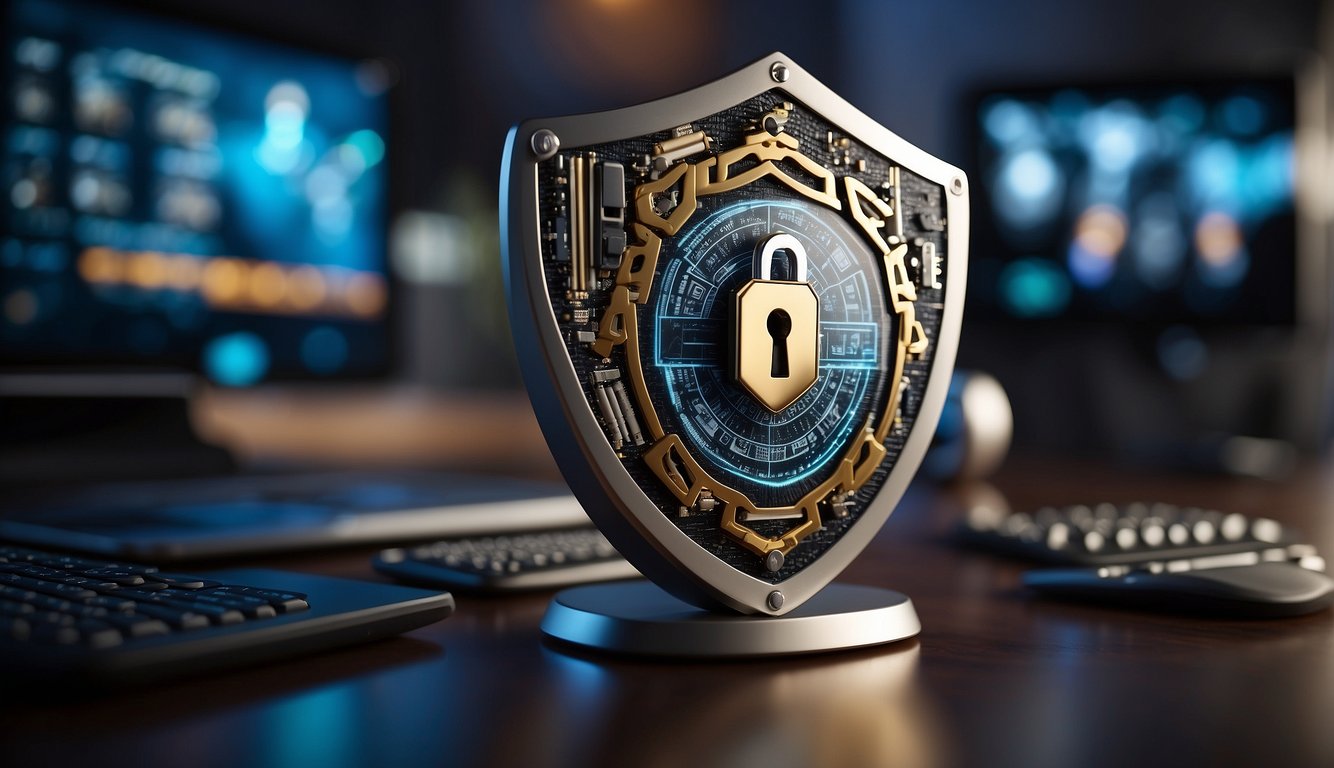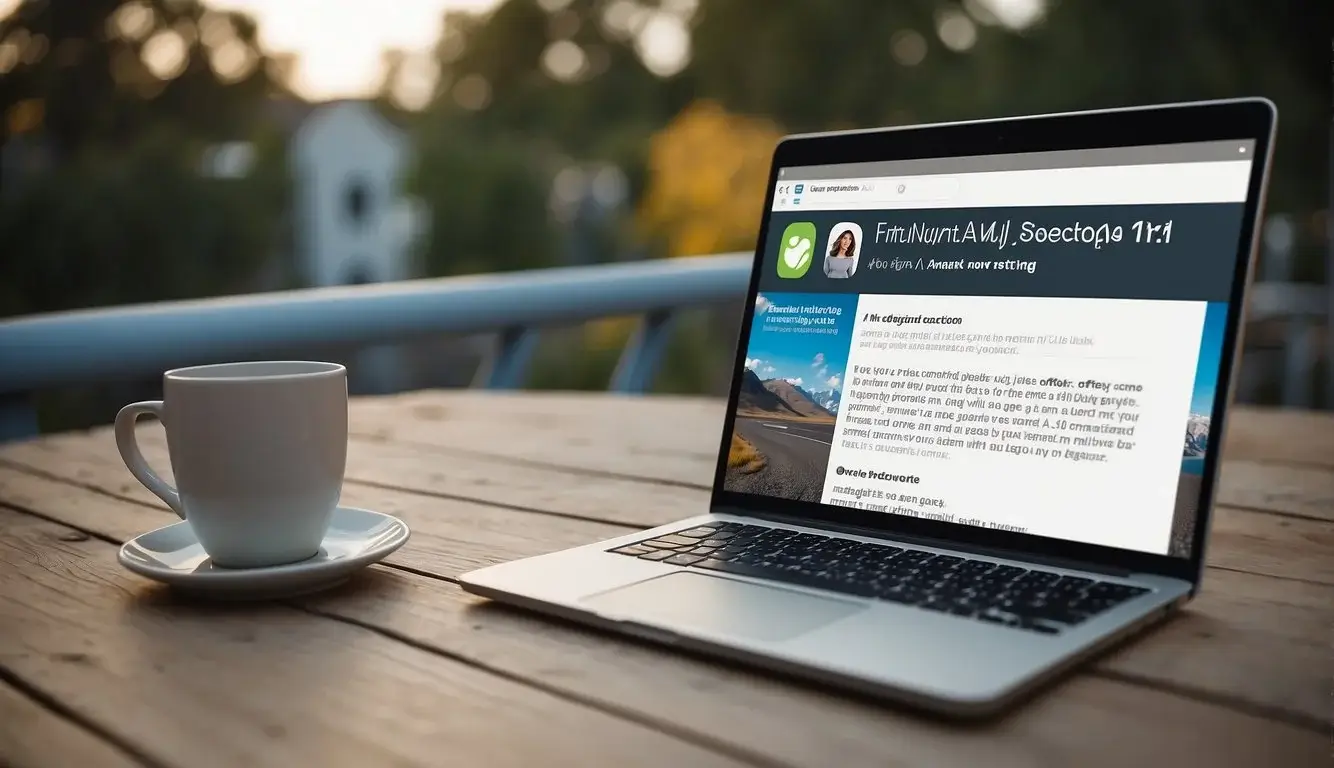Exploring the vastness of the digital realm, I’ve put together elements of digital etiquette, a vital set of instructions that dictates our behavior on the internet. From crafting thoughtful emails to engaging respectfully on social media, mastering digital etiquette is key for seamless communication in our technology-driven world today. This behavior guide ensures our digital discussions are understood, polite, and devoid of misunderstandings.
Embracing these unwritten norms is like navigating a new culture, where each post, comment, and share reflects our awareness and consideration for the online community. Adapting to these evolving etiquettes is crucial, as it shapes a positive and respectful digital presence.
Key Takeaways
- Good digital etiquette aids in preventing misunderstandings and facilitates respectful interactions.
- Respect for privacy and mindful information sharing are integral to positive online behavior.
- Adapting to evolving norms is essential for a healthy digital society.
Understanding Digital Etiquette

In my journey through the digital world, I’ve found that understanding and adhering to digital etiquette is essential for fostering respectful and constructive online interactions.
Definition and Importance
Digital etiquette, also known as netiquette, is the collection of social norms that directs courteous and respectful behavior in the digital environment. It’s not merely about adhering to rules; it shapes how we present ourselves and affects our online relationships and reputation. Recognizing the importance of digital etiquette allows me to navigate the internet conscientiously, ensuring my actions are considerate of others’ digital experience.
Principles of Digital Etiquette
To honor the principles of digital etiquette, I faithfully follow well-defined guidelines. A critical one is to communicate clearly and kindly, remembering that text can often lack tone, making it easy to misinterpret my messages. I use clear language and avoid caps lock, as it might appear as though I’m shouting.
- Respect Privacy: Just as I wouldn’t appreciate having my private information shared without consent, I rigorously protect the privacy of others online.
- Be Inclusive: I strive to be inclusive and open-minded, embracing diverse perspectives and avoiding language that could be exclusionary or offensive.
- Practice Tact: Tactfulness is key; before I share or respond online, I take a moment to consider my words and their potential impact.
I contribute to a more polite and friendly digital universe by prioritizing these principles in my online behavior.
Communication in the Digital World

In my experience, the crux of digital etiquette revolves around how we convey our thoughts and manage interactions online, whether it’s via email, social media, or other digital mediums. It’s about being mindful of our digital presence and understanding the nuances of online communication.
Effective Online Communication
I believe that the cornerstone of effective online communication is clarity. In my emails and online comments, I make it a point to be as clear as possible. I use lists to organize my thoughts, choose my words carefully, and am mindful of my punctuation; an errant comma can change the meaning of a message significantly. I know from experience that what we type can be interpreted differently than intended. Here’s what I focus on:
- Language: I keep my language simple and direct to avoid confusion.
- Tone: Since body language is absent, I often read my messages aloud before sending to check the tone.
- Punctuation: I use it wisely to break up thoughts and indicate the tone of my communication.
- Behavior: I strive to be respectful and considerate in my online conversations.
Challenges and Misunderstandings
I’ve noticed that misunderstandings are common in the digital world. Without physical cues like body language and voice tone, my comments can sometimes be misconstrued. To mitigate this, I quickly review my messages to ensure they convey respect and understanding. I avoid:
- Sarcasm: It often doesn’t translate well through text.
- Ambiguity: I am as specific as possible to prevent misinterpretations.
- Neglecting digital citizenship: I respect others’ views and privacy.
I aim to foster positive digital interactions and become a better digital citizen by paying attention to these aspects.
Respecting Privacy and Security

When I navigate the digital world, my privacy and security are paramount. Understanding how privacy settings, personal information management, and security best practices help maintain my online well-being is essential.
Privacy Settings and Personal Information
My personal information is like a key to my digital life, and privacy settings are the locks. I regularly review the privacy settings on my social media accounts to control who sees my information. This includes adjusting settings on my smartphone, which holds a trove of personal data. I’m meticulous in deciding what to share and with whom; for example, I might allow family and close friends to see my email address but not acquaintances or the public.
- Review routine: Every month, I check privacy settings across all platforms.
- Information sharing: I only provide personal details necessary for the service or interaction.
Security Best Practices
Vigilance with security measures is critical to safeguarding my data. Strong passwords are the first line of defense. I create complex passwords using a mix of upper- and lowercase letters, numbers, and symbols. I never use the same password twice, and I rely on a password manager to keep track of them all.
- Password composition:
- Minimum of 12 characters
- A mixture of different character types
- Password manager: To store and generate secure passwords
An important aspect of security is also being aware of the latest threats and updates. I ensure all my devices have the latest security patches installed, and I stay informed about potential cyber threats.
- Updates: Regularly install updates on all devices.
- Awareness: Follow credible sources for the latest in cyber security.
Creating a Positive Online Presence

In today’s digital world, my online presence is a reflection of my identity and professionalism. I understand that this not only affects how others perceive me but also opens up opportunities. Here’s what I focus on for crafting a positive digital presence that upholds my reputation.
Building a Good Reputation
To build a good reputation, I ensure that my interactions are always courteous and add value to the conversation. Whenever I post or engage online, I am mindful that my actions contribute to my reputation. This underscores the importance of thoughtful communication and consideration for others, as highlighted by The Digital Fury.
Digital Footprint and Identity
My digital footprint comprises every post, like, and share I have contributed to online spaces. Maintaining a professional and positive footprint is key. This could mean regular audits of my content to ensure alignment with the personal brand I aspire to present. Understanding how to manage my digital footprint effectively is crucial to maintaining a positive online reputation.
Online Interactions and Behavior

In my experience with digital spaces, I’ve observed that maintaining a positive online presence is hinged on understanding and adhering to certain standards of behavior. Below I’ll discuss the nuances of engaging appropriately online and how to handle conflicts when they arise, aligned with the expected behavior of digital etiquette.
Appropriate Online Conduct
When I’m online, I prioritize behaving in a way that is courteous and respectful. This approach involves a few specific practices:
- Avoiding Spam: I ensure that my contributions to discussions or content are relevant and valuable, not just noise that clutters the conversation.
- Thoughtful Comments: Whenever I leave a comment, I aim to be constructive and relevant, understanding that what I say reflects on my digital footprint.
- Moderation Practices: I support moderation tactics that help maintain a healthy discussion environment, and I report or flag content that violates community guidelines.
By focusing on these behaviors, I help cultivate a positive atmosphere and form a respectful digital community.
Handling Conflicts Respectfully
Dealing with online disagreements can be challenging, but approaching conflicts respectfully is key. Here’s how I handle these situations:
- Stay Calm: I take a moment to breathe and not respond in haste.
- Listen: I read the other person’s message completely and try to understand their perspective.
- Reply Courteously: I reply with a focus on resolving the issue rather than winning the argument.
- Seek Moderation: If the conflict escalates, I rely on platform moderation to step in rather than engage further.
By remembering these steps, I work towards a solution rather than escalate the conflict, ensuring that interactions remain as positive as possible.
Participating in Online Communities

In online communities, I’ve learned the importance of interacting respectfully and contributing in ways that add value to the discussions. Whether I’m sharing content on social media or participating in forum discussions, it is essential to abide by digital etiquette.
Forums and Social Media
When I join forums, I make it a point to read the rules and stick to the topic of each thread. It’s crucial not to spam or post irrelevant content, as it disrupts the flow of conversation. For example, on a platform like Facebook, I always strive to post things that are constructive and related to the ongoing discussion within a community group.
- Do:
- Respect the topic and members.
- Contribute valuable insights and resources.
- Don’t:
- Go off-topic or hijack threads.
- Post sensitive information without consent.
On social media, like Twitter, I’ve found that hashtags can help my posts reach the right audience. It’s good practice to create social media posts that are clear, concise, and if applicable, tagged appropriately. Reposting content is fine as long as proper credit is given.
Collaboration and Sharing
When I engage in collaboration and sharing, whether it’s documents, photos, or ideas, I make sure to respect others’ intellectual property. Crediting creators not only aligns with good digital etiquette, but also fosters a fair and creative online environment.
In online communities where sharing is the norm, such as creative forums or professional networks, I emphasize:
- Proper attribution for shared content.
- Making sure I have permission to share sensitive information.
By keeping these principles in mind, I help ensure that my actions promote a positive and respectful atmosphere in any online community or forum I’m a part of.
Safeguarding Against Cyber Threats

In my online interactions, I prioritize keeping myself and others safe. This means being smart and responsible about how I conduct myself on the internet, especially in terms of privacy and respect for others.
Preventing Cyberbullying
I find that practicing kindness and respect online is crucial. To prevent cyberbullying, I follow simple rules: never send, post, or share anything that could hurt or embarrass someone else. When I encounter cyberbullying, I take action by reporting it to the platform or authority figures.
Protecting Against Identity Theft
I ensure my computer and other devices are secure against identity theft attacks by using strong, unique passwords and enabling two-factor authentication wherever possible. Regularly updating my security software is a habit I maintain diligently. Being cautious about sharing personal information on websites has also been my key practice.
Ethical Considerations Online

When I navigate the digital world, I always make sure to consider the impact of my actions on others. Ethical online behavior encompasses a range of practices, from respecting others’ rights to sharing accurate information.
Respecting Intellectual Property
Intellectual property is a cornerstone of creative work online. I understand that copyright laws are in place to protect creators and their work. Whenever I use someone else’s content, whether it’s an article, image, or video, I make sure to obtain permission or ensure that my use falls under fair use. This respect is not just a legal obligation but a moral one, ensuring that creators receive recognition and compensation for their work.
- Copyright Laws: I always check the copyright status and adhere to the rules set by the creators.
- Property Rights: If I share someone else’s property, such as software or digital art, I credit them and follow the appropriate licensing agreements.
Avoiding Misinformation and Spam
Engaging in responsibly sharing information means I am committed to verifying facts before sharing them. Misinformation can spread rapidly, causing unnecessary panic or confusion. I ensure that the sources I use are credible and the information I provide is accurate.
- Misinformation: I cross-check any interesting news with reliable sources to prevent the spread of falsehoods.
- Spamming: I avoid sending out irrelevant or unsolicited messages, respecting the frequency with which I contact others and their right to a spam-free inbox.
Adapting to Evolving Digital Norms

With the digital landscape continuously changing, I must keep abreast of the latest developments to maintain proper online etiquette. I’ve found that it enhances my digital interactions and ensures that I’m always contributing positively to the online community.
Staying Updated with Technology
My first step has always been to stay updated with the latest technology. This doesn’t just mean the most recent devices, but also the software and apps that come with them. For instance, I regularly check for updates on my electronic devices and enable notifications to alert me as soon as new features become available. By doing so, I ensure that I’m using technology effectively and adhere to the current standards of the digital environment. Likewise, being aware of updates to internet browsers and web applications helps me to utilize them to their full potential.
Understanding New Forms of Communication
Adopting new forms of communication is a game-changer. The internet and various apps have introduced a plethora of ways to interact, from instant messaging to video conferencing—each with its own set of implied rules and etiquette. For me, embracing these platforms means:
- Learning the functionalities: Understanding how to use these communication tools properly is crucial. For instance, familiarizing myself with video conferencing tools ensures that I do not forget to mute their microphone during a call.
- Grasping the nuances: Communication isn’t just about the words I type or say; it’s also about the timing and context of messages. Recognizing the subtleties of online communication, like not bombarding someone with messages or understanding when an emoji is appropriate, is part of adapting my internet etiquette.
Focusing on these aspects of digital norms makes me better equipped to navigate the ever-evolving digital landscape with confidence and consideration for others.
FAQ – Digital Etiquette
What is considered polite behavior in online communications?
Polite online behavior includes using respectful language, avoiding typing in all caps (which can be interpreted as shouting), and being mindful of your tone, as nuances like sarcasm can often be misinterpreted. It’s also polite to respond to messages in a timely manner and to keep private conversations confidential.
How should I handle disagreements or conflicts in online discussions?
Disagree respectfully by focusing on the argument rather than attacking the person. Use evidence to support your points and be open to considering others’ perspectives. If the discussion becomes too heated or personal, it might be wise to step back or disengage entirely.
Is it okay to share someone else’s post or personal information online?
Always seek permission before sharing personal information, photos, or posts that aren’t publicly available or intended for a wider audience. Respecting privacy is a crucial aspect of digital etiquette
If you enjoyed reading about Digital Etiquette, check out our other articles:
- Bowling Etiquette 2024: Tips for Polite Play on the Lanes
- Surf Etiquette 2024: Key Rules for Sharing the Waves
- Tennis Etiquette 2024: Key Rules and Polite Play for Beginners
- Laundromat Etiquette 2024: Tips for a Harmonious Wash Day
Feel free to also check out our other Articles from the category “Etiquette & Manners“ and don’t forget to follow us on Pinterest.






